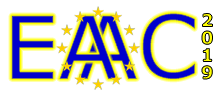Speaker
Description
Laser wakefield accelerators can provide a very compact source of electron beams, which combined with intense laser pulses can result in a versatile X-ray source. Of particular interest for medical imaging are X-rays in the 50-100 keV energy range, high enough energy to penetrate through human-sized objects. Highly collimated beams with such energies form the basis of an all optical Thomson source for X-ray Fluorescence Imaging (XFI) of (functionalized) gold-nanoparticles [F. Grüner et al., Sci. Rep. 8, 16561 (2018)]. Experimental progress in generating and diagnosing reproducible, stable electron beams that form the basis of such an X-ray source is detailed. Characterisation of the generated X-ray beam is also presented, along with details of the first proof of principle experiment.

